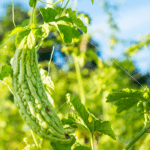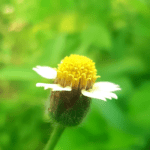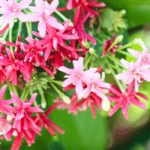Introduction to Banana Cultivation in India
Do you have a passion for agriculture and are intrigued by the prospect of growing one of India’s most beloved fruits? If you are looking to embark on a fruitful journey in banana cultivation, you’ve come to the right place! In this comprehensive guide, we, as experts in the field, will provide you with in-depth knowledge, practical tips, and expert insights on every aspect of banana farming in India. From understanding the anatomy of a banana plant to exploring the challenges and opportunities, we’ll equip you with all the necessary information to succeed in this thriving agricultural endeavor.
Overview of Banana Crop
Banana, (scientific name of Banana is Musa Paradisiaca), is one of the most significant and widely cultivated fruit crops in India. With a rich history and cultural significance, bananas have found a special place in the hearts and plates of millions. This hardy plant belongs to the family Musaceae and is known for its tall, herbaceous stature, large leaves, and, of course, its sweet, nutritious fruit.
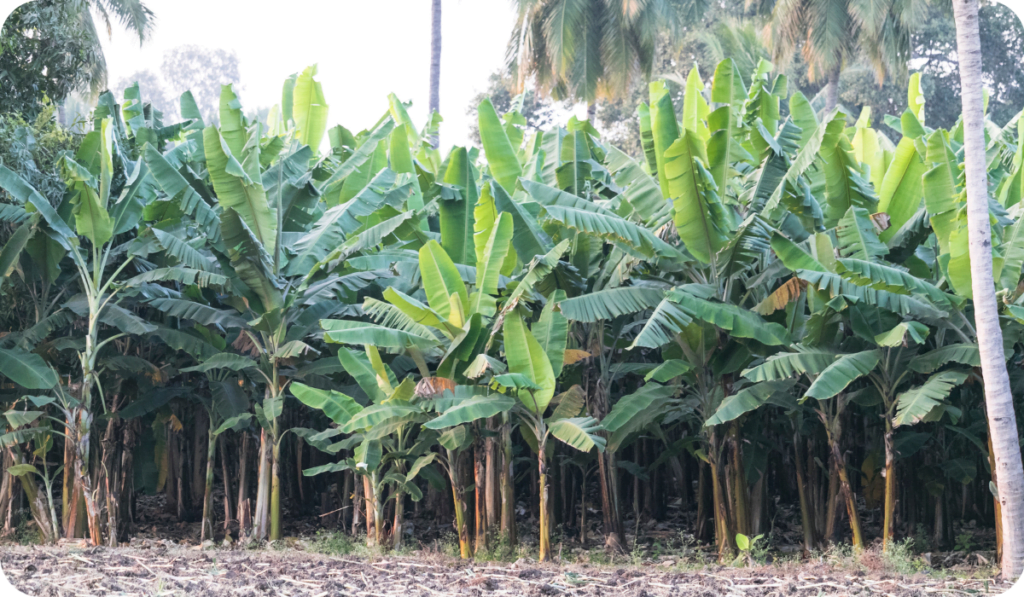
Importance of Banana Cultivation in India
The importance of banana cultivation in India cannot be overstated. It is a staple crop that contributes significantly to food security and the livelihoods of countless farmers. Bananas are not only a popular fruit for domestic consumption but also a valuable commodity for export. India stands among the top banana-producing countries globally, and the demand for this versatile fruit continues to rise.
Historical Perspective of Banana Farming in India
The cultivation of bananas in India has a long and storied history. This beloved fruit has been a part of Indian agriculture for centuries, with historical references dating back to ancient texts and folklore. Over time, various indigenous and introduced varieties have been cultivated across different regions, contributing to the diversity of banana farming practices in the country.
Understanding Banana Plants
To become a successful banana farmer, it’s essential to understand the intricacies of banana plants. Let’s delve into the anatomy of a banana plant, its life cycle, and the various stages of growth and development.
Anatomy of a Banana Plant
A banana plant comprises several key components, each playing a crucial role in its growth and fruit production. The main parts include:
- Pseudostem: The “stem” of a banana plant is not a true stem but a tightly packed arrangement of leaf sheaths. It provides support and protection to the growing fruit bunch.
- Leaves: Large, elongated, and lush green leaves form the canopy of the banana plant. These leaves play a vital role in photosynthesis, converting sunlight into energy for the plant.
- Rhizome: The underground stem, known as the rhizome, is responsible for the emergence of new shoots and roots.
- Root System: The root system of a banana plant is shallow but extensive, spreading laterally near the soil surface.

Life Cycle of a Banana Plant
The life cycle of a banana plant comprises several distinct stages, each characterized by specific growth and developmental milestones. Understanding these stages is crucial for effective plantation management.
- Vegetative Stage: This initial stage involves the growth of young plants, where the focus is on developing healthy leaves and an extensive root system.
- Juvenile Stage: During this phase, the plant continues to grow but does not produce any flowers or fruit. Patience is key during this period.
- Flowering Stage: This is the most critical stage for farmers as the plant transitions from vegetative growth to reproductive mode. The emergence of the inflorescence marks the beginning of fruit development.
- Fruiting Stage: The flowers transform into banana fruits, and the plant directs its energy towards fruit development and maturation.
- Senescence Stage: After harvest, the parent plant starts to decline, and new suckers replace it, starting the cycle anew.
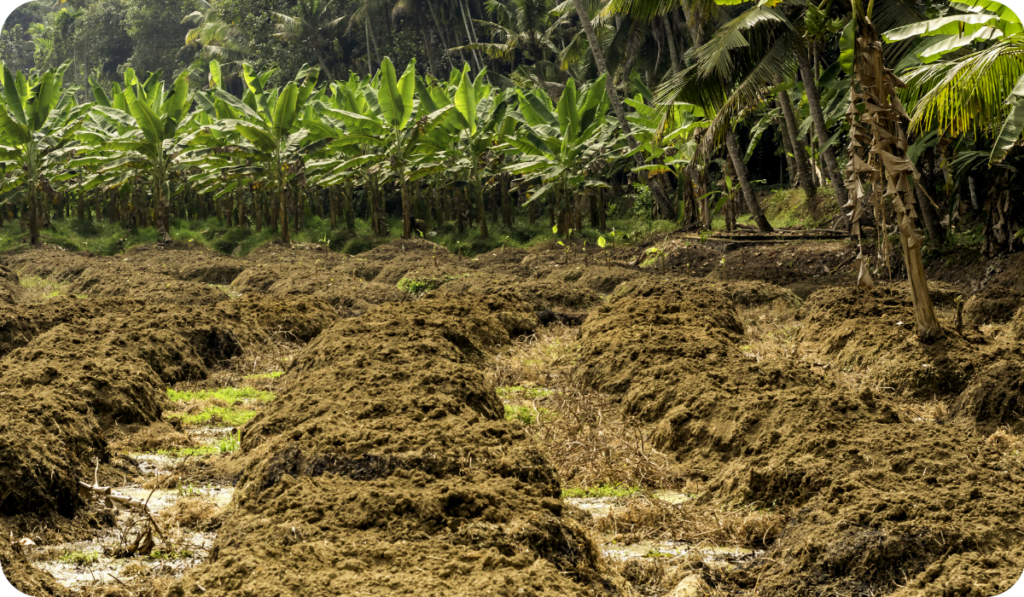
Growth and Development Stages of Bananas
Throughout its life cycle, a banana plant goes through several growth stages, each demanding specific care and attention. These stages include:
- Sucker Stage: At the beginning of the plant’s life, suckers (shoots that emerge from the rhizome) are used for propagation.
- Maiden or Sword Sucker Stage: During this stage, the primary shoot grows, and a single large leaf develops.
- Sword Sucker with 5-7 Leaves: As the shoot continues to grow, it produces five to seven large leaves, signaling its readiness for planting.
- Mature Plant: At this stage, the plant bears fruit, and the growth of new suckers allows for continuous production.
Cultivation Practices for Banana Farming in India
Now that we’ve covered the basics of banana plants, let’s dive into the nitty-gritty of banana cultivation. Successful banana farming requires meticulous planning, site selection, soil preparation, and proper plant management techniques. We’ll explore each aspect in detail to ensure your banana plantation thrives.
Selection of Suitable Land for Banana Cultivation
Selecting the right location is paramount for the success of your banana plantation. Here are some key factors to consider when choosing the land:
- Climatic Conditions: Bananas thrive in tropical and subtropical climates with temperatures between 15°C to 35°C and an average annual rainfall of 1000-2000 mm.
- Soil Type: Well-drained soils with good water-holding capacity are ideal for banana cultivation. Loamy, sandy loam, and clay loam soils are preferred.
- Soil pH: A slightly acidic to neutral pH range of 6.0 to 7.5 is best suited for bananas.
- Sunlight: Banana plants require ample sunlight for optimal growth and fruit production. Ensure the chosen site receives at least 6-8 hours of sunlight daily.
- Wind Protection: Select a site that offers some natural wind protection to shield the plants from strong gusts.

Soil Preparation and Fertilization – From Leaf Stage to Maturity
Preparing the soil and providing adequate nutrients are vital for robust plant growth. Before planting, conduct a soil test to assess the soil’s nutrient content and pH. Based on the results, make necessary amendments to ensure the soil is well-balanced and fertile.
Planting Techniques and Spacing
Proper planting techniques and adequate spacing are essential to maximize yield and promote healthy plant growth. Follow these guidelines:
- Planting Method: Bananas are typically planted using suckers or tissue-cultured plants. Choose healthy, disease-free suckers or tissue-cultured plantlets from a reliable source.
- Planting Depth: Set the suckers or tissue-cultured plantlets in the soil at a depth of around 15 cm to ensure stability and proper root establishment.
- Spacing: Maintain a spacing of about 2.5-3 meters between plants within a row and 2.5-3 meters between rows.
Irrigation and Water Management
Adequate water supply is crucial for banana cultivation, especially during the flowering and fruiting stages. Implement efficient irrigation practices to ensure consistent moisture levels. Drip irrigation and mulching can be effective techniques to conserve water and reduce evaporation.
Pest and Disease Management in Banana Production
Protecting your banana plantation from pests and diseases is critical to maintain high yields and fruit quality. Common pests and diseases affecting bananas include:
- Banana Aphid: Aphids can cause significant damage to banana plants by sucking sap from the leaves and transmitting viruses.
- Sigatoka Leaf Spot: This fungal disease affects the leaves, reducing photosynthesis and fruit production.
- Panama Disease: Also known as Fusarium wilt, this soil-borne disease can be devastating to banana crops.
- Thrips: These tiny insects can cause severe damage to young leaves and flower bracts.
Implementing integrated pest management (IPM) strategies, such as using biopesticides and cultural practices, can effectively control pest and disease infestations.
Weed Control in Banana Plantations
Weeds compete with banana plants for nutrients, water, and sunlight, hindering their growth. Effective weed control is essential, especially during the early stages of the crop. Mulching, manual weeding, and the use of herbicides are some methods to manage weed growth.
Tissue Culture Banana Cultivation
Tissue culture banana cultivation has gained popularity due to its numerous advantages over conventional methods. Let’s explore this technology and understand the steps involved in tissue culture banana propagation.
Understanding Tissue Culture Banana Cultivation Technology
Tissue culture is a propagation technique that involves the culture of plant cells, tissues, or organs in a nutrient medium under sterile conditions. It allows for rapid multiplication of disease-free, genetically identical plantlets.
Advantages and Disadvantages of Tissue Culture Banana
Tissue culture banana cultivation offers several advantages:
- Disease-free Plantlets: Tissue-cultured plantlets are free from pests and diseases, ensuring healthy and vigorous growth.
- Genetic Uniformity: All plantlets produced through tissue culture are genetically identical, leading to uniformity in growth and fruit quality.
- Rapid Multiplication: Tissue culture allows for rapid multiplication, ensuring a consistent supply of quality planting material.
However, there are some disadvantages to consider:
- High Initial Investment: The establishment of a tissue culture laboratory can involve significant costs.
- Dependency on External Suppliers: Farmers may need to rely on external suppliers for quality tissue-cultured plantlets.
Steps Involved in Tissue Culture Banana Propagation
The tissue culture propagation process involves several steps:
- Initiation of Culture: Small pieces of young tissue are taken from the growing tip of a banana plant and disinfected to remove any contaminants.
- Multiplication: The tissue is placed in a nutrient medium that promotes rapid cell division and multiplication.
- Shoot Formation: The multiplied cells develop into tiny plantlets with shoots.
- Rooting: The shoot plantlets are transferred to another nutrient medium to promote root development.
- Acclimatization: Once rooted, the plantlets are gradually acclimatized to external conditions before being transplanted to the field.
Banana Varieties in India
India boasts a diverse array of banana varieties, each with its unique characteristics and growing requirements. Familiarize yourself with the most popular indigenous and introduced varieties to make an informed decision for your plantation.
Popular Indigenous Banana Varieties
- Cavendish: One of the most common varieties, known for its sweet taste and attractive appearance.
- Robusta: A hardy variety with excellent disease resistance and a slightly tangy flavor.
- Rasthali: Known for its delicate sweetness and creamy texture, it is a favorite in South India.
- Nendran: A popular cooking banana in Kerala, with a starchy texture and distinctive flavor.
Introduced Banana Varieties and Their Characteristics
- Grand Nain (G9): A robust and disease-resistant variety, widely cultivated for export due to its longer shelf life.
- Red Banana: With its reddish-purple skin and sweet flavor, this variety is gaining popularity among health-conscious consumers.
- Poovan: A small-sized banana, often used for making traditional sweets and snacks.
- Karpuravalli: Known for its pleasant aroma and unique taste, this variety is favored for fresh consumption.
Red Banana Cultivation
Red bananas, with their vibrant color and delightful taste, offer a lucrative opportunity for farmers looking to diversify their banana plantation. Let’s explore the unique characteristics of red bananas, their cultivation practices, and the market demand for this exotic variety.
Unique Characteristics of Red Bananas
Red bananas stand out from their yellow counterparts due to their striking reddish-purple skin. They are shorter and plumper than other bananas, with a creamy white to pale pink flesh that is sweeter and more fragrant. Rich in vitamins, minerals, and antioxidants, red bananas are a healthy addition to any diet.
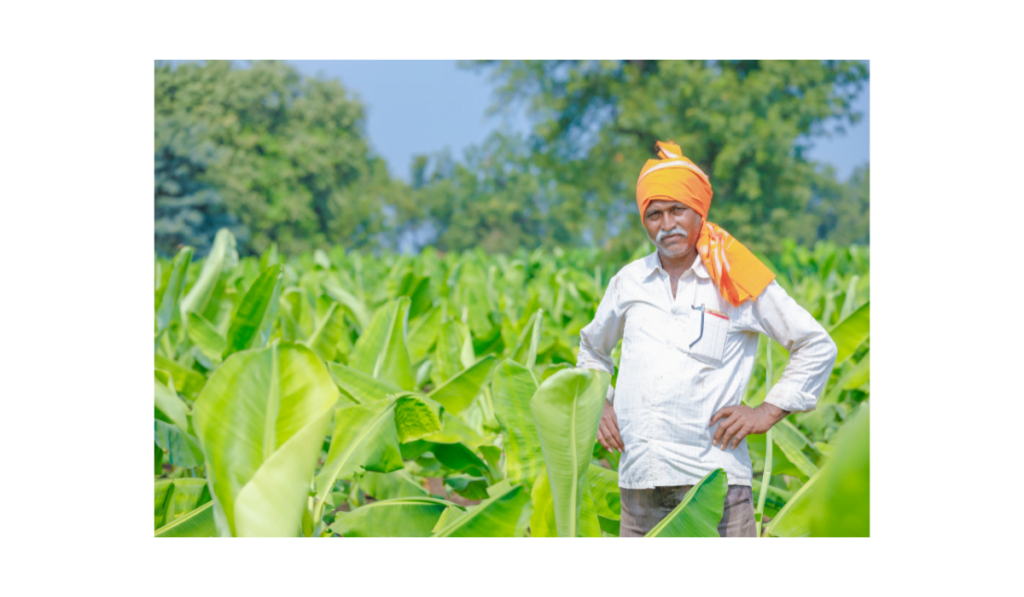
Growing Red Bananas in India
Cultivating red bananas follows similar practices to that of other banana varieties. However, there are specific considerations to ensure the best quality and yield of red bananas.
- Variety Selection: Choose a suitable red banana variety based on the agro-climatic conditions of your region.
- Soil Requirements: Red bananas prefer well-drained loamy soil with good fertility.
- Climate: These bananas thrive in warm, humid climates with ample sunlight.
- Planting and Spacing: Follow standard planting techniques and maintain appropriate spacing between plants.
- Fertilization: Provide the necessary nutrients, including potassium, to promote fruit development.
Market Demand and Opportunities for Red Bananas
The demand for red bananas has been steadily rising, both in domestic and international markets. Their unique appearance and delightful taste make them a sought-after commodity among health-conscious consumers and culinary enthusiasts. As a result, cultivating red bananas presents a promising opportunity for farmers to tap into new markets and increase their income.
Banana Plantation Management
The successful management of your banana plantation involves various crucial tasks, from pruning and deleafing techniques to harvesting, post-harvest handling, and quality control.
Pruning and Deleafing Techniques
Pruning and deleafing are essential cultural practices that contribute to the health and productivity of banana plants. Regularly removing old and diseased leaves helps maintain good airflow and sunlight penetration within the canopy, reducing the risk of disease and pest infestations.
Harvesting and Post-Harvest Handling
The timing of harvest greatly impacts the quality and shelf life of bananas. Harvest the fruit when it reaches the mature green stage to ensure optimum taste and texture. Post-harvest handling, including proper sorting, cleaning, and packing, is crucial for maintaining the fruit’s market value and extending its shelf life.
Storage and Transport of Bananas
Appropriate storage conditions are essential for preserving the quality and freshness of harvested bananas. Keep the fruit at a controlled temperature and humidity to prevent premature ripening or spoilage. Proper packaging and transport methods also play a vital role in delivering bananas to the market in optimal condition.
Quality Control and Standards
Ensuring consistent quality is essential for establishing a reputable brand and building customer loyalty. Adhering to quality standards, such as Good Agricultural Practices (GAP) and quality certification programs, will enhance your bananas’ marketability and demand.
Challenges and Opportunities in Banana Farming
Despite the vast potential of banana cultivation, farmers face various challenges that need to be addressed to sustainably grow this crop. On the other hand, the industry presents exciting opportunities for growth and expansion.
Environmental and Climatic Factors Affecting Banana Cultivation
Banana farming is influenced by various environmental factors, such as temperature, rainfall, humidity, and soil quality. Understanding and adapting to these factors are crucial for successful cultivation.
Market Trends and Export Potential
Stay updated with the latest market trends and consumer preferences to make informed decisions regarding banana varieties and production volumes. Exploring export opportunities can also open doors to global markets.
Government Support and Incentive Schemes
Governments often offer support and incentive programs for agricultural ventures, including banana cultivation. Familiarize yourself with available schemes and subsidies to optimize your farming practices.
Sustainable Practices in Banana Cultivation
Embracing sustainable agricultural practices is not only beneficial for the environment but also enhances the long-term viability of your banana farm.
Organic Banana Farming Methods
Organic banana farming avoids the use of synthetic chemicals and promotes natural methods to enhance soil fertility, control pests, and maintain ecological balance.
Integrated Pest Management in Banana Plantations
Integrated Pest Management (IPM) involves a holistic approach to pest control, combining various strategies to minimize chemical pesticide usage and protect beneficial insects.
Water Conservation Techniques
Efficient water management is vital for sustainable banana cultivation. Implement water conservation techniques, such as drip irrigation and rainwater harvesting, to optimize water usage.
Future Prospects of Banana Cultivation in India
The future of banana farming in India looks promising, with ongoing research and innovation driving the industry forward.
Role of Research and Innovation
Continuous research and innovation in banana farming techniques, crop protection, and post-harvest handling will contribute to increased productivity and sustainability.
Emerging Technologies in Banana Farming
Advancements in agricultural technology, such as precision farming, data-driven decision-making, and automated systems, will revolutionize the way bananas are cultivated in the future.
Frequently Asked Questions (People Also Ask)
What are the suitable fertilizers for banana cultivation in Maharashtra?
Farmers in Maharashtra can use a balanced fertilizer containing essential nutrients like nitrogen, phosphorus, and potassium to promote healthy banana growth.
How does the climate in Tamil Nadu affect banana farming?
Tamil Nadu’s warm and humid climate is ideal for banana cultivation, ensuring vigorous vegetative growth and high yields.
Which varieties like ‘hill banana’ are preferred for cultivation in hilly regions of India?
Hill banana varieties, like the ‘Blue Java’ banana, are well-suited for cultivation in hilly regions due to their adaptability to cooler temperatures.
What is the significance of green manuring crops like Daincha in banana farming?
Green manuring crops like Daincha enrich the soil with organic matter and nitrogen, enhancing soil fertility and promoting healthy banana plant growth.
How can farmers in North India optimize the growth of banana crops?
In North India, farmers can grow green manuring crops and ensure proper irrigation to meet the high water requirement of bananas.
What are the key factors affecting plant establishment and growth in banana cultivation?
Factors like soil quality, water availability, temperature, and pest management significantly impact the successful establishment and growth of banana plants.
How can farmers effectively manage ratoon crops for sustained banana production?
Regular pruning, providing adequate nutrients, and maintaining proper irrigation are essential for successful ratoon cropping in banana cultivation.
What are the soil requirements for planting tissue culture bananas?
Tissue culture bananas thrive in well-drained soils with good drainage, as excess water can be detrimental to their growth.
How many plants per acre are recommended for optimal banana cultivation in Karnataka?
To achieve maximum yield, it is recommended to plant around 1,000 to 1,500 banana plants per acre in Karnataka.
What practices should be followed to prevent banana bunchy top disease?
Farmers must regularly inspect and remove infected plants to prevent the spread of banana bunchy top virus in the plantation.
What are the benefits of the superficial root system of banana plants?
Banana’s superficial root system allows it to efficiently absorb nutrients and water from the topsoil, contributing to its rapid growth.
How can farmers ensure good soil conditions around the base of the banana plant?
Farmers should mulch around the base of banana plants to maintain soil moisture and prevent weed growth, promoting healthy root development.
What are the water requirements of banana crops during different growth stages?
Bananas require consistent and adequate watering, with water requirements increasing during flowering and fruit development stages.
Can banana cultivation be done throughout the year in Andhra Pradesh?
In Andhra Pradesh, banana cultivation is suitable throughout the year due to the favorable climatic conditions.
What steps should be taken prior to planting tissue culture bananas?
Prior to planting, prepare the soil with organic matter and ensure that it is well-drained, providing an ideal environment for tissue culture banana growth.
Banana Cultivation – A rewarding journey for Farmers
In conclusion, banana cultivation in India offers an exciting and rewarding journey for farmers. Armed with in-depth knowledge, practical tips, and expert insights, you are well-equipped to embark on your banana farming venture. Remember to choose suitable varieties, implement proper cultivation practices, and embrace sustainability to ensure a fruitful and prosperous journey in this thriving agricultural domain.
As you venture into the world of banana farming, may your dedication, passion, and hard work bear sweet and abundant fruit! Happy farming!
For a wide selection of fertilizers and soil amendments suitable for all these plants, we invite you to explore our esteemed webstore at www.shehrikisaan.com. Our webstore offers a comprehensive range of products designed to enhance the growth and vitality of your plants.
Whether you’re seeking specialized fertilizers, organic amendments, or premium-quality soil enhancers, our webstore is your one-stop destination. With our commitment to providing garden enthusiasts with top-notch products, you can trust us to cater to your gardening needs effectively. Visit www.shehrikisaan.com today and unlock the secret to flourishing plants.
Discover our Social Media Presence and web store. Choose your favourite platforms:
🌐 Google Business Link: https://goo.gl/maps/wgs6yU8mArXRfHdi9
🎥 YouTube: https://www.youtube.com/@shehrikisaan
💼 LinkedIn: https://www.linkedin.com/company/shehrikisaan/
📌 Pinterest: https://in.pinterest.com/ShehriKisaan/
📘 Facebook: https://www.facebook.com/ShehriKisaan/
📷 Instagram: https://www.instagram.com/shehrikisaan_gn/
🐦 Twitter: https://twitter.com/Shehri_Kisaan
🛒 Product Web Store: www.shehrikisaan.com
📚 Check out our other articles, education materials, blogs, and write-ups too: www.shehrikisaan.in



